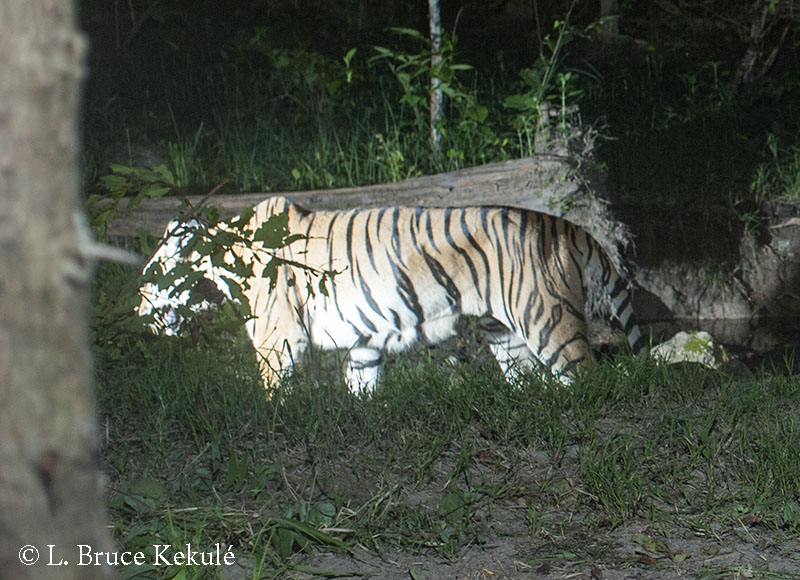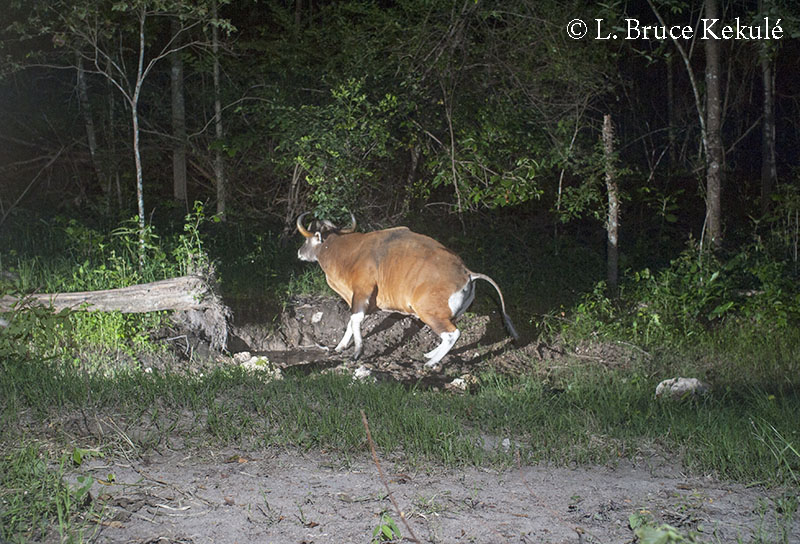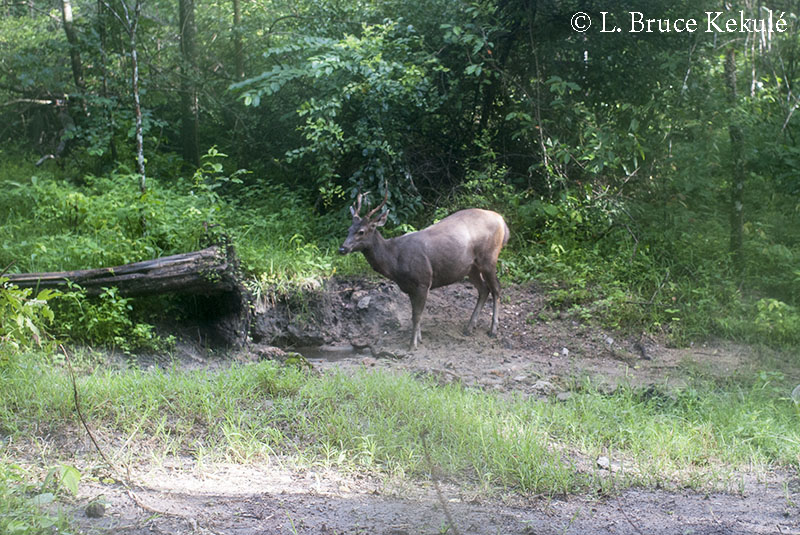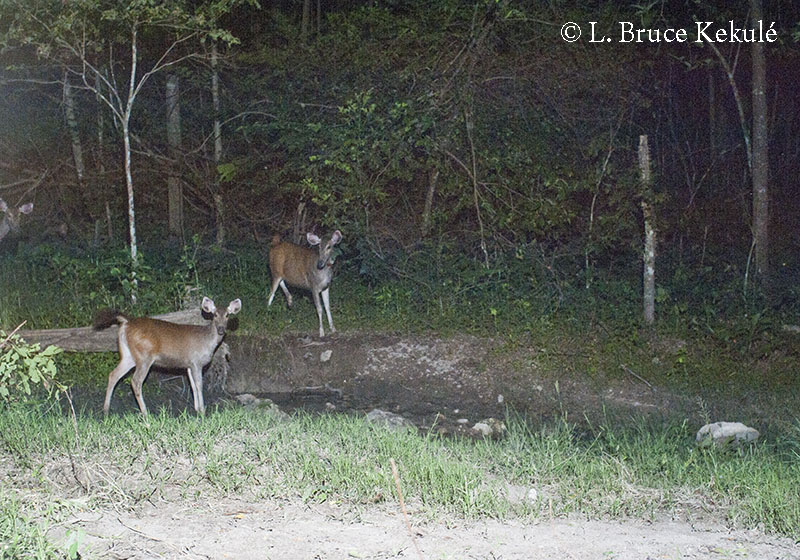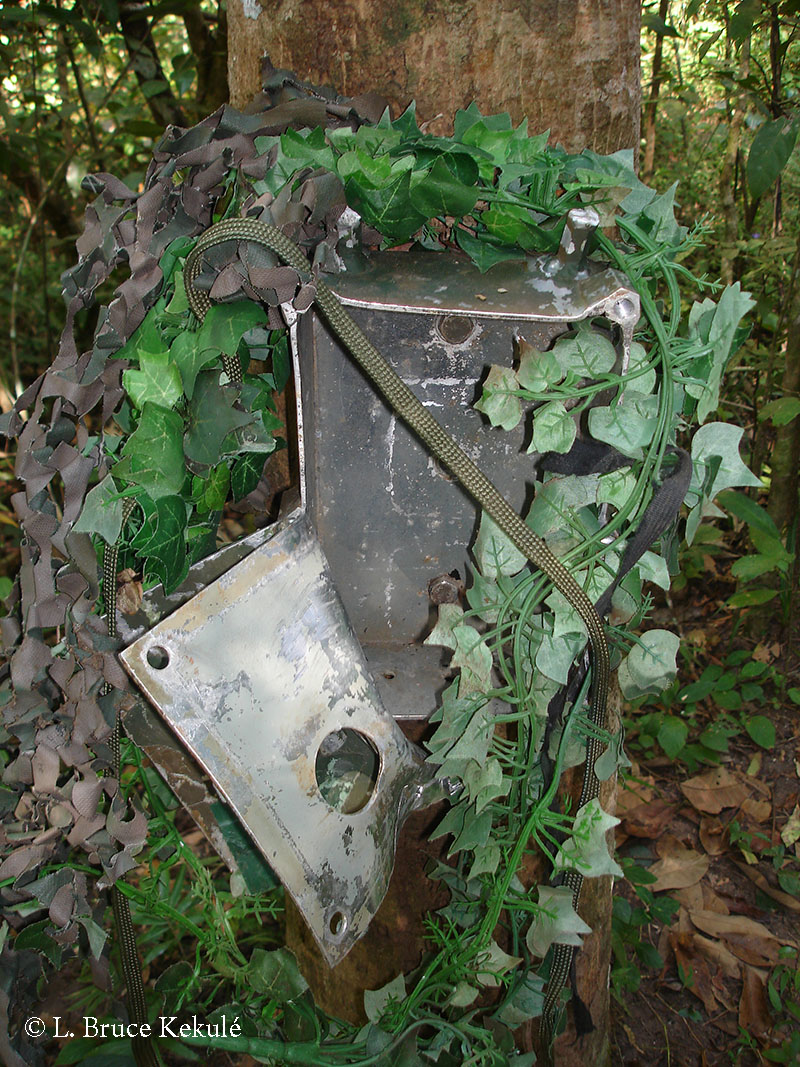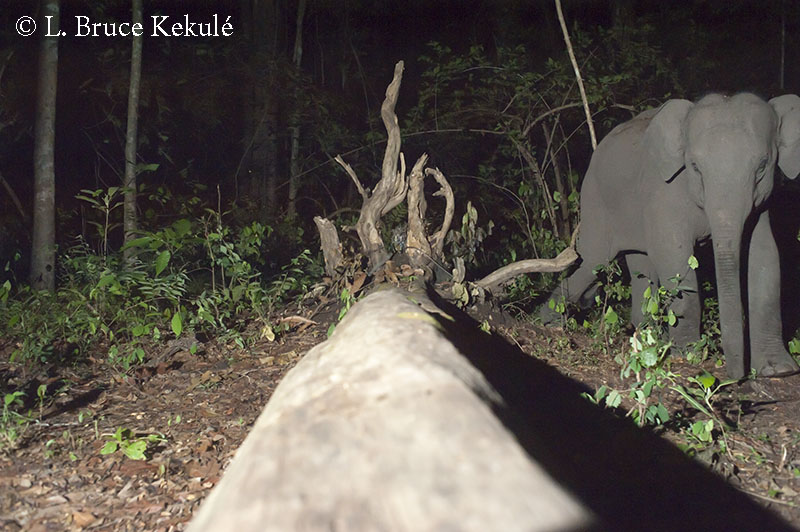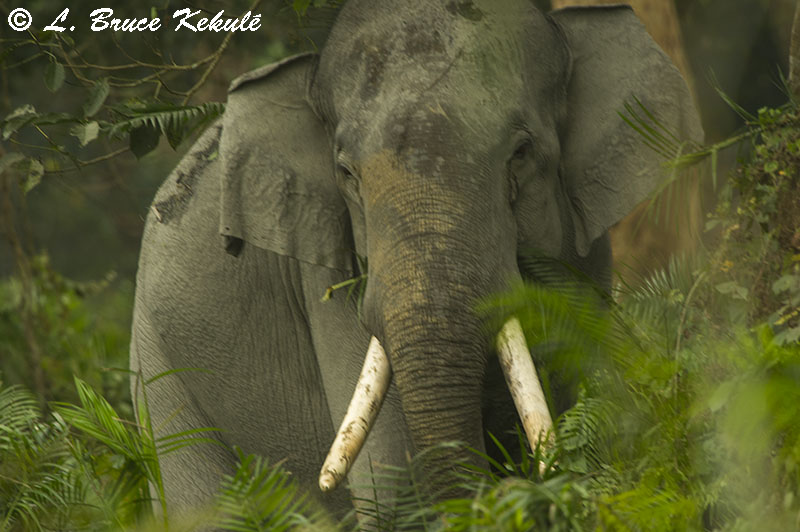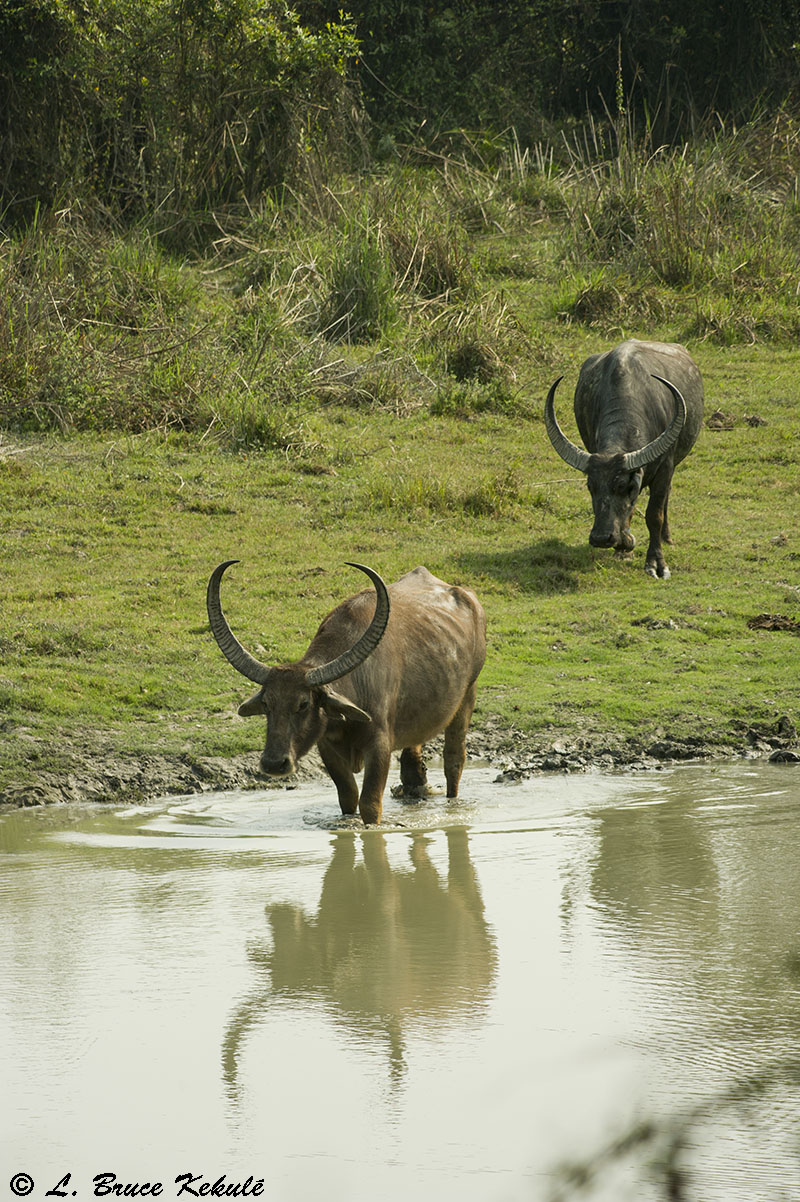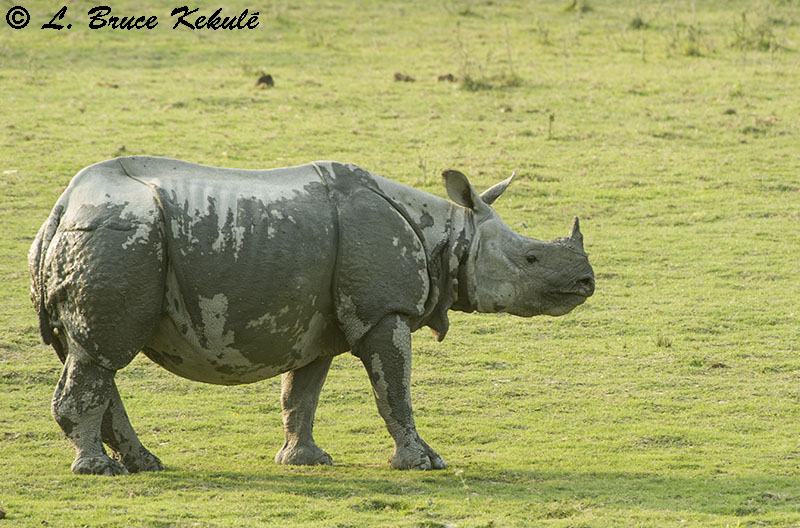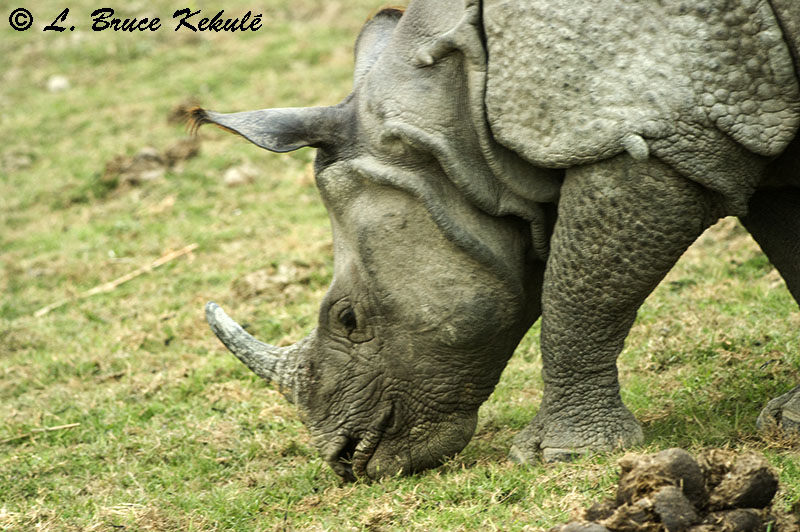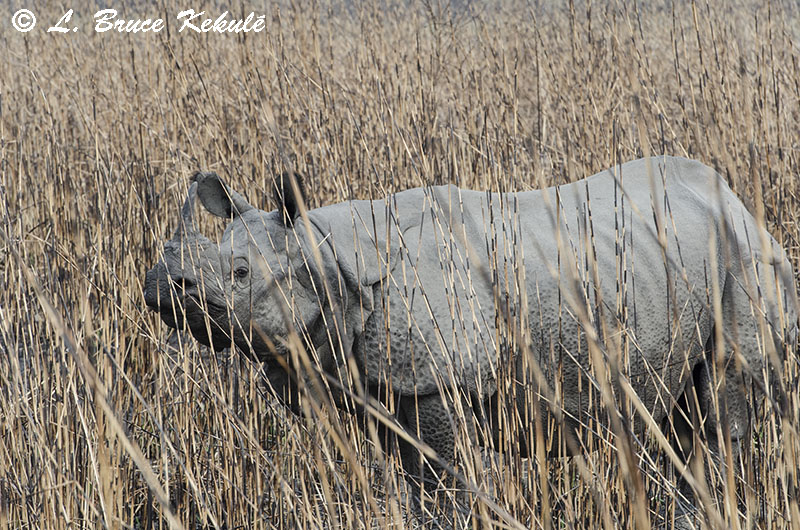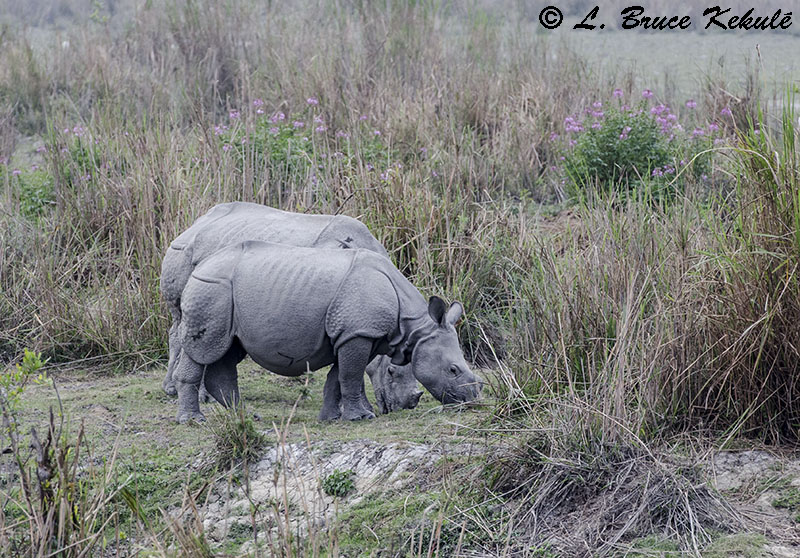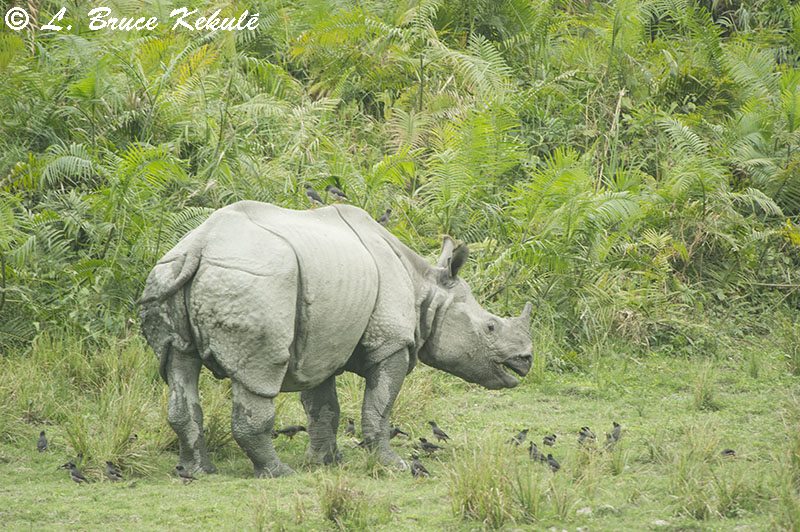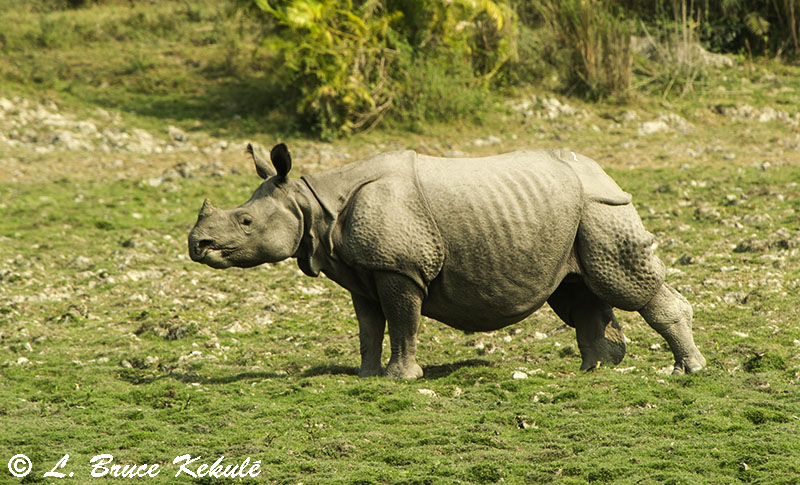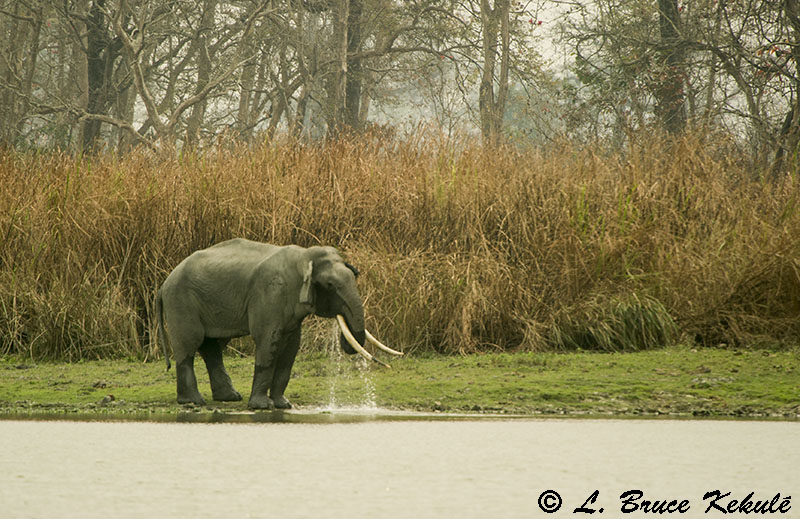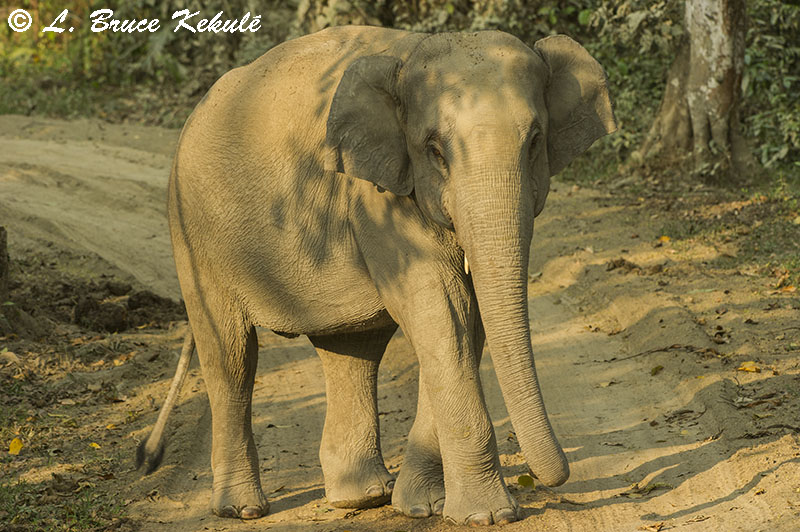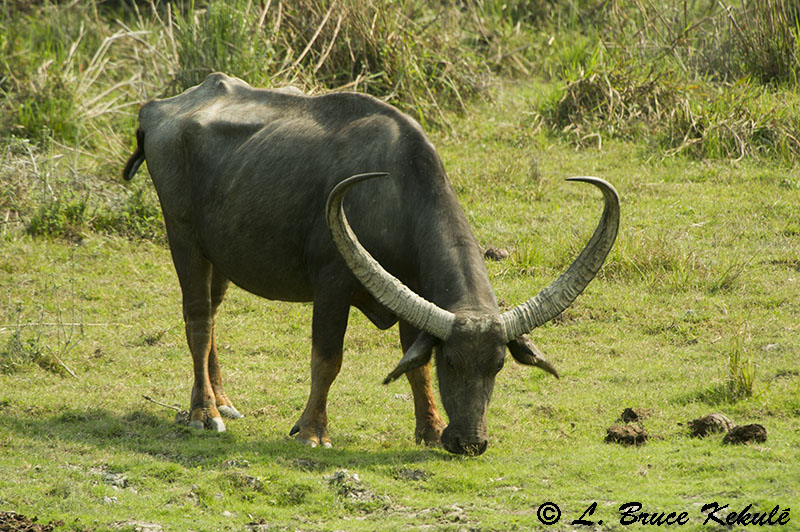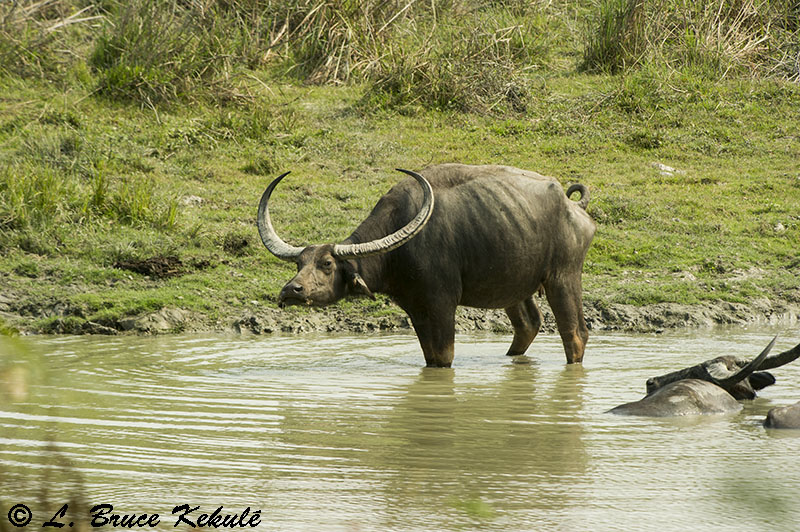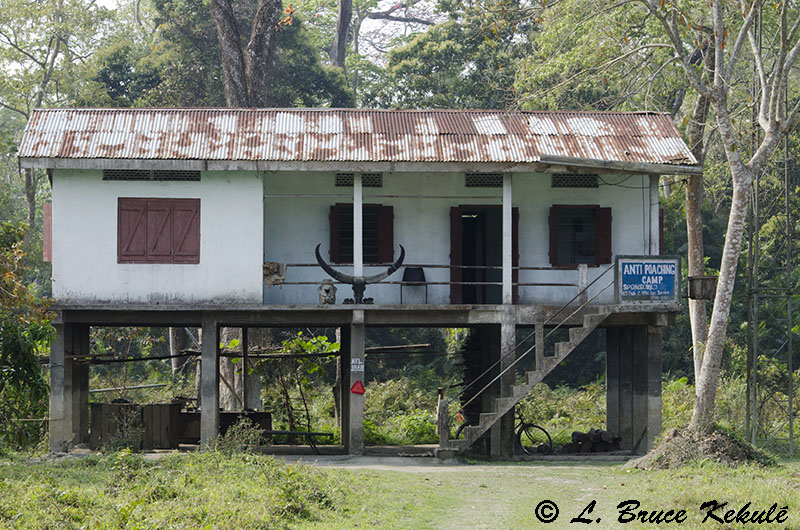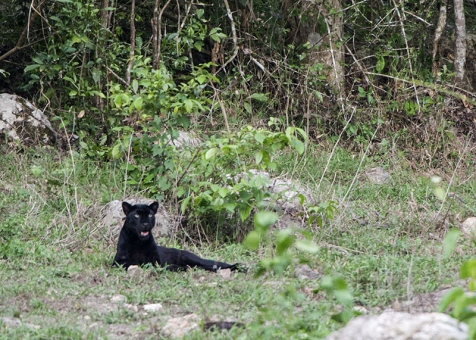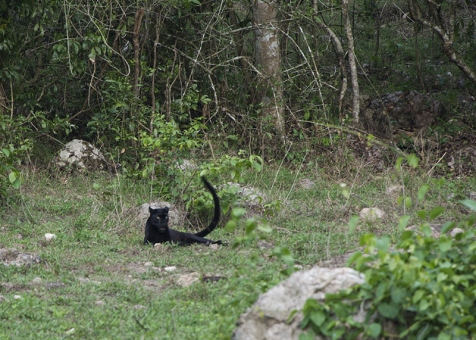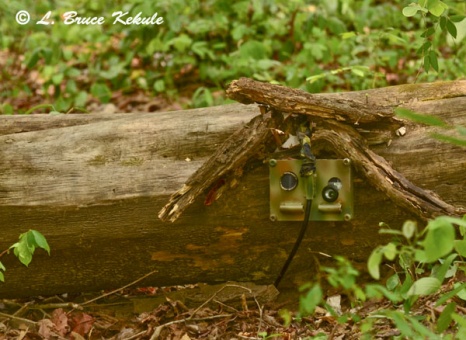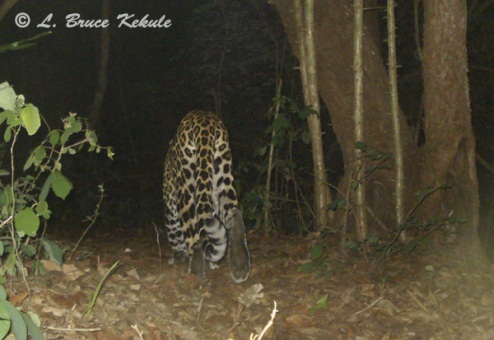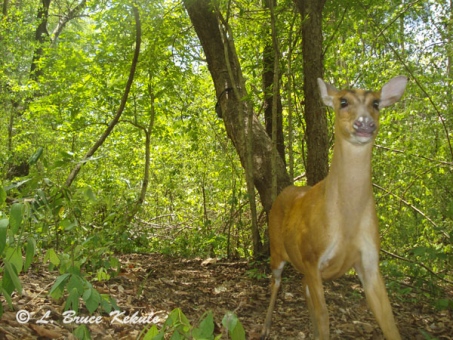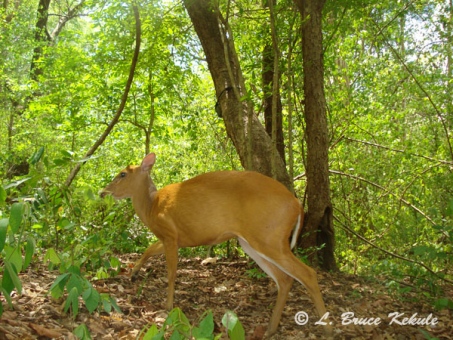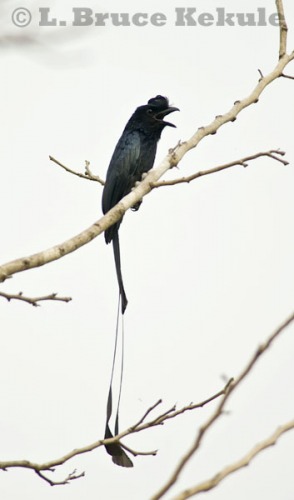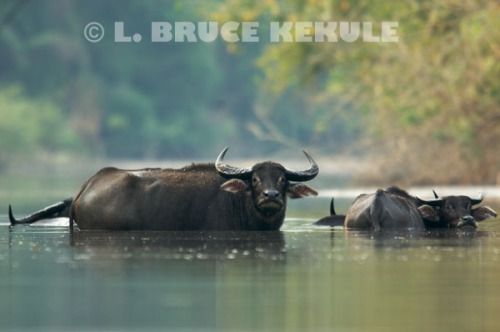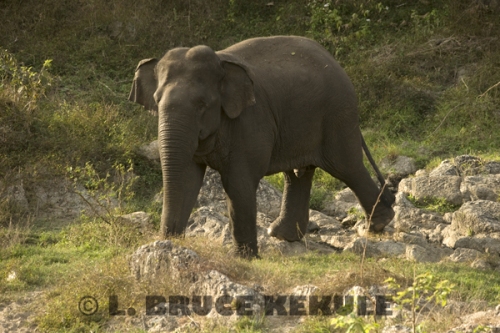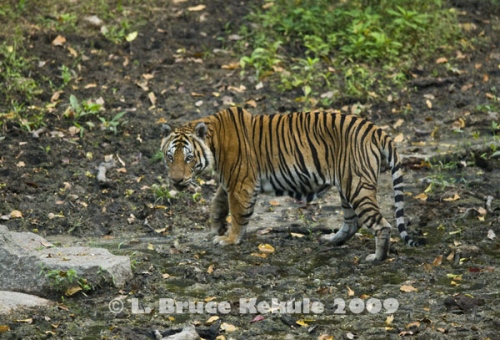Posts Tagged ‘World Heritage Site’
Kaziranga National Park and Tiger Reserve: The greatest protected area in the world
From a dozen great one-horned rhinos to over 2,400 individuals in just 80 years…!
Kaziranga, a UNESCO World Heritage Site is situated in the State of Assam in northeast India, and encompasses some 430 square kilometers of grasslands, wetlands and river habitat plus a buffer zone amounting to another 400 square kilometers. Over time, the Assamese have created the greatest protected area in the world.
A close-up of a rhino bull and a mynah birds looking for insects at sunset. There are
some 2,400 rhinos in Kaziranga making this place absolutely amazing in regards to
these creatures still thriving in the wild, and where one can actually see them.
A big tusker with nice ivory. There are some 1,000 elephants in the park and they
have also flourished because of the pristine habitat, food sources and great protection.
But they are also targeted by poachers but on a much lesser scale. It’s easy to see
them in all areas of Kaziranga as they go about their daily lives.
A pair of wild water buffalo cows at a waterhole. Along with the rhino and elephants,
these bovid have increased to 1,300 individuals. The Indian sub-species have the largest
horns of any creature in the world, and Kaziranga has the highest density of buffalo.
In most places, the African and Asian rhinos are in trouble and close to extinction, especially the Javan and Sumatran species. Rhinocerotidae have been on earth since the ‘Late Eocene or Early Oligocene’ (about 33 to 28.3 million years ago). Being odd-toed ungulates and herbivorous, they thrive in these grassland and wetlands that are supplied nutrients from the annual floods from the great Brahmaputra River.
This river flows from the Himalayas through the park in the northern section. This waterway is one of India’s main lifelines providing water to millions of people downstream along its entire length all the way to Bangladesh emptying into the Bay of Bengal. Annual floods bring nutrients to the land and the ecosystem is replenished.
Originally established as a reserve forest in 1908, Kaziranga was declared a sanctuary in 1916 to counter extensive poaching of the rhinoceros. In 1974, the Indian Government demarcated the present area as a national park. Then, in 2007, it was declared a tiger reserve under the Central Government’s ‘Project Tiger’ scheme.
Rhino gallery: Over four days, I photographed loads of these prehistoric looking
creatures in all three zones (West, Central and East)…! It was simply amazing…!
Eighty years ago, the rhino population was decimated to just a dozen or so beasts by poaching for their horn in demand by the Chinese and Vietnamese. The Assamese government decided to really put its foot down and instigated a policy to eradicate poachers using ‘extreme measures’ throughout the park, plus increasing the ranger force by several hundred percent.
The animal population immediately began to pick-up, and the last senses in 2014 estimated that some 2,400 rhino, 1,300 wild water buffalo and 1,000 elephant are thriving in this small park. Along with this, there are over 100 tigers that live here too and the park has one of the highest densities of the striped cat per square kilometer in the world. As a destination to see these majestic and iconic creatures, Kaziranga is the place to go.
Wild elephant gallery: I saw these herbivores every day and in all zones. There are over
1,000 of these giants in the park…!
The Assamese people are very proud of their heritage and the park is a ‘case study’ on how to actually save a species from extinction. All the large mammals propagate in safety and show the world; if you look after a place with a mandate to rid the protected area of poachers, animals will flourish. However, it turned into a small war and many people were actually killed including some rangers.
Even so in 2014, about 50 rhinos lost their horns and poachers killed three tigers. The battle continues and the government has done a brilliant job of saving nature with a tough mandate of ‘shoot to kill’ in order to protect this place.
It has worked so well that it is now possible to see rhino everyday, and just about everywhere, even outside the park. As I was leaving for the airport after four days on a recent safari in Feb. 2015, there were some cars parked by the side of the road and photographers had their cameras out taking images of a rhino a hundred meters from the tarmac.
Wild water buffalo gallery: There are more than 1,300 of these bovid and I saw them
everyday in all zones…! They have the largest horns in the animal kingdom….!
There are three zones (West, Central and East) that tourists are allowed to enter and it is scheduled by the lodge where you are staying on what areas one can visit. The Big Three (rhino, buffalo and elephants) can be seen in all areas. If you are lucky, a tiger may appear at any time. There are many bird species thriving and it is a bird watcher’s paradise.
The Park is home to more than 70 percent of the one-horned rhinoceros left in the world and harbors more than 60 percent of India’s wild water buffalo population along with the only population of Eastern swamp deer (or barasinga). Other important wildlife found are: gaur, leopard, fishing cat, large and small Indian civet, sambar, barking deer, hog deer, hog badger, Hoolock gibbon, capped langur, Assamese macaque, rhesus macaque, sloth bear, Gangetic dolphin and otter, etc.
A fresh tiger pug mark on the road in Kaziranga. I did not see a tiger here but got
a wonderful shot of a running tiger in the grassland of Corbett National Park
in northern India….!
From New Delhi, the flight to Guwhati in Assam takes about two hours and then it’s another four hours by taxi to the Infinity Lodge where I stayed situated close to the three Kaziranga park gates. There are many other hotels and lodges and one can find these on the Internet. There is also a bus service that passes the park. Traffic to the park is a bit hectic at certain times since it’s the main road in the northeast India to the next state of Nagaland, and on into Myanmar. It has been said that smugglers use this route for tiger bones and rhino horn to China.
Some of the rare birds thriving in Kaziranga: A female black stork identified by a
yellow iris near a waterhole; a Kalij pheasant in the forest; two bar-headed geese
in the wetlands, and a grey heron and pelican swimming in a pond….!
One thing for sure: the Forest Department here in Assam is one tough cookie. They have increased rangers to 700 men and women, and have 162 guard posts with 3-4 rangers living in each of these quarters. They do mainly foot patrols and are always armed with a least a rifle (mainly British .303s but some men have newer generation .315 Indian rifles that is lighter in weight than the old cumbersome English service arm) or sometimes 12 gauge shotguns. Some of the elite forest guards have assault rifles. While on any safari in Kaziranga, a forest guard with a rifle is mandatory in case of an emergency. The men do mostly foot patrols around their respective areas.
Kaziranga gallery: The park has seen some serious flooding and the most extreme levels
have been recorded shown here at a ranger station. Travel and viewing wildlife is normally
done in Maruti (Suzuki) type jeeps. Controlled burning of the grasslands carried out by the
Forest Department benefits the herbivores when new grass sprouts up….!
Needless to say, it is perfectly safe to travel in and around the park. An armed forest guard to ride ‘shotgun’ is mandatory and is picked up at the gate. For the most part, you’ll be able to see these beasts in a Maruti (Suzuki) safari type jeep called a ‘gypsy’. It is the best way to view wildlife and there are many operators at most of the lodges. The forest department also offers guided tours on an elephant-back to get up-close to the big beasts.
The best time to visit Kaziranga is from November to April. I used a Company named ‘Wilderness Uncut’ (wildernessuncut.com) for all my arrangements. Wildlife photographers Anu Marwah from New Delhi, and Jason Fernandes from Mumbai are co-owners and they organized everything to perfection. Their service is top-notch and I know who will arrange any future trips to India for me. Being wildlife photographers, they know what is needed for a successful trip.
That’s me with my naturalist Polash Borah, driver Mohammed Nekib Ali and a forest
ranger at a rest stop station early one morning during my recent safari.
I also had the pleasure of working with Polash Borah, my naturalist (17 years of experience in Kaziranga) and Mohammed Nekib Ali (10 years experience) my driver who also acts as a naturalist. We spent four days together and had a great time. They know exactly what are the best areas for viewing and photographing wildlife, and both work at the Infinity Lodge just outside the park.
May 1st is ‘World Rhino Day’ in India, and Kaziranga National Park and Tiger Reserve is the best place in the world to see these rare creatures up-close. If you are planning on visiting a protected area first hand and want to view Mother Nature’s giants, make arrangements to Assam; you won’t be disappointed…!
Travel Info:
From Thailand, one of the best airlines to travel to India is ‘Air India’ that has a daily flight leaving Bangkok around 8am and arriving in New Delhi at noon. Arriving in the daytime in Delhi is much better and safer than arriving after midnight like some of the other airlines do. A connecting flight on Indigo Airways to Guwhati in Assam is very good and takes about two hours. They are a budget airline and have several flights a day. I recommend these two carriers as being very reliable and reasonable in price. Give yourself at least three hours through the New Delhi domestic airport, as it is extremely busy and crowded. Finally, when flying a domestic airline, a maximum of 15 kilos for check-in baggage is the standard. Anything over that weight will be charged as excess.
A ‘Black Leopard’ again..!
An extraordinary sighting in Huai Kha Khaeng Wildlife Sanctuary
A black leopard resting at the hot spring.
Sometimes things happen in succession that boggles the mind. On May 6th I posted a tale about a ‘black leopard’ plus other Asian wild animals caught by my Sony S600 cam on a trail into a hot spring in Huai Kha Khaeng Wildlife Sanctuary, western Thailand where I’m currently running a camera trap program.
Entering the hot spring.
I also mentioned in the story that I photographed a ‘black leopard’ from a tree blind some 15 years ago just up the trail a bit. The ‘leopard spots’ image is one of my all-time favorite wildlife photographs ever. http://brucekekule.com/camera_trapping/a-black-leopard-passes-my-camera-trap/
Leaving the hot spring.
On May 7th, I was back at the hot springs to set camera traps, and to sit at the base of the old tree for some through-the-lens work. Who knows what might show-up.
I was with my friend Sarawut Sawkhamkhet, a Thai wildlife photographer. We arrived and set-up a temporary blind about 3pm. The weather was warm and balmy with nice clear-blue skies.
A full-frame shot.
At 5:45pm, the unthinkable happened! A ‘black leopard’ appeared out of the forest near the springs and walked over for a drink, and then disappeared for a short while. Then the magnificent creature came back and flopped down on all fours twitching its tail looking straight at us staying for about 10 minutes before going back in the forest where it had come from.
Kabook Kabieng hot springs deep in the interior.
I would venture to say, this is the same cat I camera trapped back in February and it could also be an offspring of my original leopard back in 1998. Who knows? I was elated to say the least.
To see and photograph a black leopard once again at this same location after all these years is something out of the extraordinary. When time permitted, I set one of my trusty Sony S600 cams at the hot spring and will go back in a couple of weeks to see what has visited the waterhole.
Then I intend to set a DSLR Nikon or Canon camera trap with several flashes for improved images. This place is truly worth the effort, time and difficulty to get here. I look forward to more incredible images from this wildlife haven.
The ‘Little Elephant Slider’
A 3-month old baby elephant slides in on the trail to a waterhole deep in the forests of western Thailand. This family unit is also made-up of several mature females and younger juveniles.
Huai Kha Khaeng ongoing camera trap saga
New camera trap gets a leopard and tiger first time out
Sony W55 in Otter 2000 case with a Snapshotsniper SSII board and 3 AA externals
The feeling of accomplishment is the best part of building a ‘homebrew’ trail camera and then sharing the photos with others. I am extremely lucky to be working in a place that is one of the top tiger reserves in the world, and is extremely productive for camera trapping. It is not only the tigers, but also other predators like leopard, wild dog and jackal, and their prey species such as deer, pig and wild cattle that makes Huai Kha Khaeng Wildlife Sanctuary truly special.
A leopard caught by the Sony W55 camera trap
When I first built this unit, I had one fallen tree across a trail in mind and it proved to be the right choice. I designed the cam to slip the 10mm ‘Python’ locking cable around the horizontal log. One of the first animals to jump over was a mature male leopard several nights after the setup. This frame filling shot is what I was hoping for.
Leopard caught again as it went down the trail
Several nights later, a tiger went over and the W55 caught its rear end as it disappeared down the trail. A female muntjac (barking deer) was also caught. This was after only a 15-day soak and shows the tremendous biodiversity of this amazing place. This unit definitely worked as designed: to scout a game trail with a low-down set-up.
Tiger caught going down game trail several nights later
The next order of business now is to build a Nikon ML-3 ‘active-infrared’ controlled SLR Nikon F5 film camera using Fuji Provia 400 ISO slide film, and a Nikon D2x DSLR and both can fire five shots a second in ‘continuous mode’ with several wireless SB600s or SB28s. These two cameras are my old prime camera bodies that I have kept over the years (they were really expensive), and I have resurrected them for this project. The Nikon D2x is now in the Nikon shop for an overhaul but will be finished real soon.
Female muntjac (barking deer) caught by the camera trap
My main objective is to catch the cats making the jump. I will eventually be installing both units close together on either side of this log about a meter or so away from the trail. The sensors need to be slightly angled away so as to activate them a bit early. Both cameras will be using an 18-35mm wide-angle lens (the zoom setting of the lens will be adjusted when installed) and that should help to catch these quick-acting animals. The units have to be precise and fast, and fire off a good string of shots with several flashes.
Muntjac spooked by the camera’s flash
The only negative aspect with active infrared at night; the first shot will not trip the flash but follow up shots will be OK. But I can also hard wire a flash for each cam with a sync-cable in conjunction with the wireless flashes and that should be enough. I will also experiment with a ‘passive infrared’ system that can wake-up the flashes in time for the shot. However, this is a hit and miss situation whereas active infrared is usually spot on and will trip immediately after the beam is broken.
The system will be modular so sensors and camera are separate, and they will be ‘plug and play’ units. That’s the plan anyway for this absolutely amazing wildlife game trail. I have all the parts ready; just finding time to put it all together is the next trick.
Got a very busy schedule with a trip to Africa and the States for the next couple of months. But I will be getting the SLR and DSLR camera traps up and running shortly after getting back to Thailand, and of course will post the builds. Most important: they have to be ‘elephant proof’ but I have that covered as usual.
Posted from Tsavo National Park, southern Kenya, Africa
Journey through a World Heritage Site – Part Two
On the road to Huai Kha Khaeng
Seub Nakhasatien monument
Day one: March 5th
I left Bangkok slightly behind schedule but made good time as I headed northwest. After five hours of driving with a few pit stops here and there to eat, buy fuel, food and essentials, I arrived at the headquarters of Huai Kha Khaeng. As always, I paid respects to Seub Nakhasatien, a forest ranger who gave his life to nature back in 1990. This site is his spiritual home and many people visit his statue and the house where he lived, in remembrance of his sacrifice. While we were at the headquarters, I photographed a few Eld’s deer that were released into the wild around the station.
Wild boar on the run at a mineral deposit
I then drove another couple of hours going south for a rendezvous at Khao Nang Ram Wildlife Research Station. As I got closer, a huge wild boar flashed across the dirt road and disappeared into the forest giving us a bit of jolt. A total of eight forest guards including the assistant chief graciously welcomed me providing shelter and dinner. I arrived just at dusk and handed over the provisions for the excursion down the river. Dinner was served and we then watched a documentary showing wildlife and tiger research carried out at the station. Everyone retired to bed for an early wake-up.
A racket-tailed drongo by the river
Day two: March 6th – A change of plans
Our original plan was to walk from the research station across the mountains and down to the river but due to extremely hot and dry conditions in the mixed deciduous forest and the possibility of forest fire, it was decided to drive further north to the river and walk from an old deserted ranger station named ‘Yang Dang’ so we would have a good supply of water the entire length of the walk. I brought a water purification pump and we always had clean safe drinking water. This tool was simple to use and carry but extremely important for us city folk accustomed to bottled water.
Through the forest we continued west and arrived at Kabook Kabieng ranger station some 50 kilometers north. During the dry season, this part of the forest in Huai Kha Khaeng is still lush hill-evergreen. For me, this place has many fond memories of great photographic sessions.
Another wild boar at another mineral deposit
I got my first ever camera-trap photograph of a leopard on a deer kill very close to the station. On that same trip, I also photographed another leopard along the road in late afternoon from my truck, and captured a shot of a black leopard from a tree-blind at a nearby hot spring the next day. I got three leopards in two days and it still stands out as one of my great achievements as a wildlife photographer. Leopards are notoriously difficult to see and it was a lucky trip.
A black leopard photographed more than ten years ago at a hot spring
Finally, we all arrived at ‘Yang Dang’ and made preparations for the 30-kilometer trip down river. The road was rough on my old Ford Ranger but we chugged along in low gear for some gut-wrenching 4X4 driving. Unfortunately, a carry rack on top of the cab was ripped off and destroyed during the rough and tumble, and reduced to rubble.
Everyone packed up and off we went down the river. We still had to negotiate about 6 kilometers on foot to the first camp during mid-day temperatures that went past 38 degrees centigrade. It was a struggle but we made it and set-up camp by the peaceful Huai Kha Khaeng waterway just as the sun dipped behind the mountains. The water was extremely cool and it was great having a bath and freshening up for the first night by the river. Dinner was served in typical jungle style with rice cooked in army patrol pots and various Thai dishes including some hot curry. Everyone then hit their beds and sleep quickly overcame the group.


